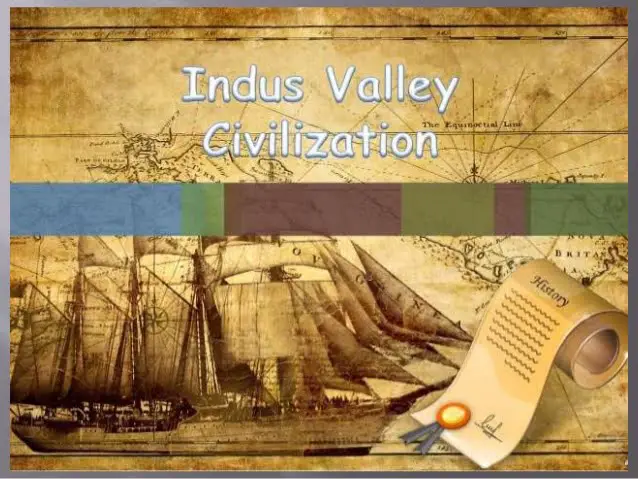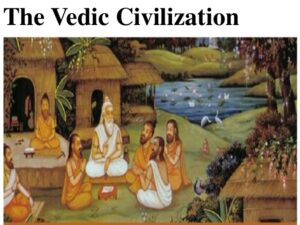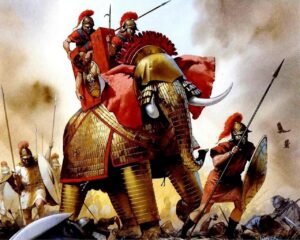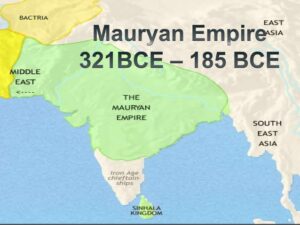
Ancient history I I The Indus Valley Civilization I I Culture and heritage
The Indus Valley Civilization and Ancient history:– India’s set of experiences and culture is dynamic, spreading over back to the start of human progress. It starts with a baffling society along the Indus River and in cultivating networks in the southern grounds of India.
The historical backdrop of India is interspersed by the steady reconciliation of relocating individuals with the assorted societies that encompass India. Accessible proof recommends that the utilization of iron, copper, and different metals was broadly common in the Indian sub-landmass at a genuinely early period,
which is demonstrative of the advancement that this piece of the world had made. Before the finish of the fourth thousand years BC, Indian history had arisen as a locale of exceptionally created human advancement.
The Indus Valley Civilization
The History of India starts with the introduction of the Indus Valley Civilization, all the more correctly known as the Harappan Civilization. It thrived around 2,500 BC, in the western piece of South Asia, what today is Pakistan and Western India. The Indus Valley was home to the biggest of the four antiquated metropolitan civic establishments of Egypt, Mesopotamia, India, and China.
Nothing was thought about this civilization till the 1920s when the Archeological Department of India completed unearthings in the Indus valley civilization wherein the remains of the two old urban areas, viz. Mohenjodaro and Harappa were uncovered. The remnants of structures and different things like family articles, weapons of war, gold and silver adornments, seals, toys, ceramics products, and so on, show that somewhere in the range of four to 5,000 years back a profoundly evolved Civilization prospered in this area.
The Indus valley civilization today in history india was essentially a metropolitan development and individuals lived in very much arranged and all around constructed towns, which were likewise the communities for exchange. The vestiges of Mohenjodaro and Harappa show that these were heavenly shipper urban areas all around arranged, logically laid, and very much cared for. They had wide streets and a very much created seepage framework. The houses were made of prepared blocks and had at least two stories.
The exceptionally enlightened Harappans knew the craft of developing oats, and wheat and grain comprised their staple food. They burned-through vegetables and foods grown from the ground sheep, pork and eggs too. Confirmations show that they wore cotton just as woolen articles of clothing. By 1500 BC, the Harappan culture reached a conclusion. Among different causes attributed to the rot of Indus Valley Civilization are the repetitive floods and other common causes like tremor, and so on
Vedic Civilization
The Vedic human advancement is the most punctual development ancient history throughout the entire existence of old India. It is named after the Vedas, the early writing of the Hindu public. The Vedic Civilization thrived along the stream Saraswati, in an area that currently comprises of the advanced Indian conditions of Haryana and Punjab. Vedic is inseparable from Hinduism, which is another name for strict and profound imagined that has advanced from the Vedas.
The Ramayana and Mahabharata were the two extraordinary sagas of this period.
Vedic Civilization
The Vedic development is the most punctual human progress throughout the entire existence of old India. It is named after the Vedas, the early writing of the Hindu public. The Vedic Civilization prospered along the waterway Saraswati, in an area that currently comprises of the cutting edge Indian conditions of Haryana and Punjab. Vedic is inseparable from Hinduism, which is another name for strict and profound imagined that has developed from the Vedas.
The Ramayana and Mahabharata were the two extraordinary legends of this period.

The Buddhist Era
During the existence season of Lord Gautam Buddha, sixteen incredible forces (Mahajanpadas) existed in the seventh and mid sixth hundreds of years BC. Among the more significant republics were the Sakyas of Kapilavastu and the Licchavis of Vaishali. Other than the republics, there were monarchical states, among which the significant ones were Kaushambi (Vatsa), Magadha, Kosala and Avanti. These states were administered by vivacious characters who had left upon the arrangements of glorification and retention of adjoining states. Notwithstanding, there were particular indications of the conservative states while those under the rulers were extending.
Buddha was brought into the world in BC 560 and passed on at eighty years old in BC 480. The spot of his introduction to the world was a forest known as Lumbini, close to the city of Kapilavastu, at the foot of Mount Palpa in the Himalayan reaches inside Nepal. Buddha, whose unique name was Siddhartha Gautama, was the originator of Buddhism, the religion and the philosophical framework that advanced into an incredible culture all through a lot of southern and eastern Asia.

Alexander’s Invasion
In 326 BC, Alexander attacked India, subsequent to intersection the waterway Indus he progressed towards Taxila. He at that point tested lord Porus , leader of the realm between the streams Jhelum and Chenab. The Indians were crushed in the savage fight, despite the fact that they battled with elephants, which the Macedonians had at no other time seen. Alexander caught Porus and, similar to the next nearby rulers he had vanquished, permitted him to keep on overseeing his region.
During this outing to streams Hydaspes and Indus in the south, Alexander searched out the Indian thinkers, the Brahmins, who were renowned for their shrewdness, and bantered with them on philosophical issues. He got unbelievable for quite a long time in India for being both, an insightful thinker and a daring champion.
One of the towns in which the military stopped had a place with the Mallis, who were supposed to be perhaps the most warlike of the Indian clans. Alexander was injured a few times in this assault, most truly when a bolt punctured his breastplate and his ribcage. The Macedonian officials protected him in a close shave from the town.
Alexander and his military arrived at the mouth of the Indus in July 325 BC, and turned toward the west for home indian history in hindi.

The Mauryan Empire
The time of the Mauryan Empire (322 BC-185 BC) denoted another age throughout the entire existence of India. It is supposed to be a period when sequence got positive. It was a period when legislative issues, craftsmanship, exchange and trade raised India to a brilliant tallness. It was a time of unification of the domains which lay as divided realms. In addition, Indian contact with the rest of the world was set up viably during this period.
The disarray following the passing of Alexander allowed Chandragupta Maurya a chance to free the nations from the burden of the Greeks, and in this way possess the regions of Punjab and Sindh. He later toppled the force of Nandas at Magadha with the guide of Kautilya, and established a great Mauryan realm in 322 BC. Chandragupta, who managed from 324 to 301 BC, consequently, procured the title of emancipator and the principal ruler of Bharata.
At a higher age, Chandragupta got intrigued by religion and left his seat to his child Bindusar in 301 BC. Bindusar vanquished the Highland of Deccan during his rule of 28 years and gave his seat to his child Ashoka in 273 BC. Ashoka arose not just as the most celebrated lord of the Maurya tradition, but on the other hand is viewed as one of the best ruler of India and the world.
His realm covered the entire region from Hindu Kush to Bengal and stretched out over Afghanistan, Baluchistan and the entire of India except for a little zone in the farthest south. The valleys of Nepal and Kashmir were likewise remembered for his realm.
The main occasion of Ashoka’s rule was the victory of Kalinga (current Odisha) which end up being the defining moment of his life. The Kalinga war saw horrible homicide and annihilation. The sufferings and outrages of the war zone cut the core of Ashoka. He made a purpose not to take up arms any more. He understood the evil of common victory and the magnificence of good and otherworldly victory. He was attracted to the lessons of Buddha and gave his life to the triumph of men’s heart by the law of obligation or devotion. He developed an arrangement of Dharma Vijaya, ‘Success by Piety’.

End of the Mauryan Empire
Ashoka was prevailing by feeble rulers, which urged the regions to declare their freedom. The burdensome errand of regulating a particularly immense realm couldn’t be executed by the frail rulers. The shared fight among the replacements additionally added to the decay of the Mauryan Empire.
In the start of the first century A.D., the Kushanas set up their position over the north-west wilderness of India. The most renowned among the Kushana lords was Kanishka (125 A.D.- 162 A.D.), who was the third in the Kushana line. The Kushana rule proceeded till the center of third century A.D. The most prominent accomplishment of their standard was the improvement of Gandhara School of Art and further spread of Buddhism into inaccessible locales of Asia.

Gupta Dynasty
After the Kushanas, the Guptas were the main administration. The Gupta time frame has been depicted as the Golden Age of Indian history. The principal well known ruler of the Gupta tradition was Ghatotkacha’s child Chandragupta I. He wedded Kumaradevi, the girl of the head of the Licchavis. This marriage was a defining moment in the existence of Chandragupta I.
He got Pataliputra in share from the Lichhavis. From Pataliputra, he established the framework of his domain and began vanquishing many adjoining states with the assistance of the Licchavis. He governed over Magadha (Bihar), Prayaga and Saketa (east Uttar Pradesh). His realm stretched out from the waterway Ganges to Allahabad. Chandragupta I additionally got the title of Maharajadhiraja (King of Kings) and governed for around fifteen years.
Chandragupta I was prevailing by Samudragupta in around 330 A.D., who ruled for around fifty years. He was an extraordinary military virtuoso and is said to have instructed a military mission across the Deccan, and furthermore quelled the woods clans of the Vindhya locale.
Samudragupta’s replacement Chandragupta II, otherwise called Vikramaditya, vanquished the broad domains of Malwa, Gujarat and Kathiawar. This gave remarkable riches, which added to the flourishing of the Guptas. The Guptas in this period occupied with ocean exchange with the nations of the west. It was most likely during his rule that Kalidas, the best Sanskrit writer and producer, just as numerous other researcher and researchers prospered.

Decay of Gupta Dynasty
The decay of the Gupta power in northern India between the end of fifth and the sixth century A.D. offered ascend to different little autonomous realms and pulled in unfamiliar attacks of Huns. Toramara was the head of the Huns and was effective in attaching enormous pieces of the Gupta Empire. His child, Mihirakula was a coldblooded brute and one of the most noticeably awful despots known. Two local ground-breaking rulers, Yasodharman of Malwa and Baladitya of Magadha squashed his force and shut down his reign in India.

Harshavardhana
With the initiation of the seventh century, Harshavardhana (606-647 A.D.) climbed the seat of Thaneshwar and Kannauj on the passing of his sibling, Rajyavardhana. By 612 Harshavardhana combined his realm in northern India.
In 620 A.D. Harshavardhana attacked the Chalukya realm in the Deccan, which was then controlled by Pulakesin II. Yet, the Chalukya opposition demonstrated extreme for Harshavardhana and he was vanquished. Harshavardhana is notable for his strict lenience, capable organization and conciliatory relations. He kept up discretionary relations with China and sent emissaries, who traded thoughts of the Chinese rulers and built up their insight about one another.
The Chinese voyager, Hiuen Tsang, who visited India during his rule, has given a distinctive depiction of the social, monetary and strict conditions, under the standard of Harsha commended the lord. Harsha’s demise, by and by, left India with no focal vital force.

Read More:- Indian History Indus Valley Civilization
The Chalukyas of Badami

The Chalukyas were an incredible force in southern India somewhere in the range of sixth and eighth century A.D. Pulakesin I, the primary incredible leader of this line climbed the seat in 540 A.D. also, having made numerous magnificent triumphs, set up a strong domain. His children Kirtivarman and Mangalesa further expanded the realm by pursuing numerous effective battles against the neighbors including the Mauryans of the Konkans.
Pulakesin II, the child of Kirtivarman, was one of the best leader of the Chalukya tradition. He administered for just about 34 years. In this long rule, he solidified his clout in Maharashtra and vanquished huge pieces of the Deccan. His most prominent accomplishment was his triumph in the cautious battle against Harshavardhana.
Be that as it may, Pulakesin was vanquished and murdered by the Pallav lord Narasimhavarman in 642 A.D. His child Vikramaditya, who was likewise as incredible a ruler as his dad, succeeded him. He recharged the battle against his southern adversaries. He recuperated the previous magnificence of the Chalukyas generally. Indeed, even his extraordinary grandson, Vikramaditya II was additionally an incredible hero. In 753 A.D., Vikramaditya and his child were ousted by a boss named Dantidurga who laid the.

www.GKDuniya.in will update many more new jobs and study materials and exam updates, keep Visiting and share our post of Gkduniya.in, So more people will get this. This content and notes are not related to www.GKDuniya.in and if you have any objection over this post, content, links, and notes, you can mail us at gkduniyacomplaintbox@gmail.com
And you can follow and subscribe to other social platforms. All social site links in the subscribe tab and bottom of the page.
Important Links
Particulars Official Links |
Related Links |
Official Site |
View more at website |
You-tube |
GKDuniya9 |
|
|
GKDuniya.in, IndiaDigitalHub |
|
|
GKDuniya.in |
Another site visit |
Indiadigitalhub.com |
Get new updates |
Click here |
